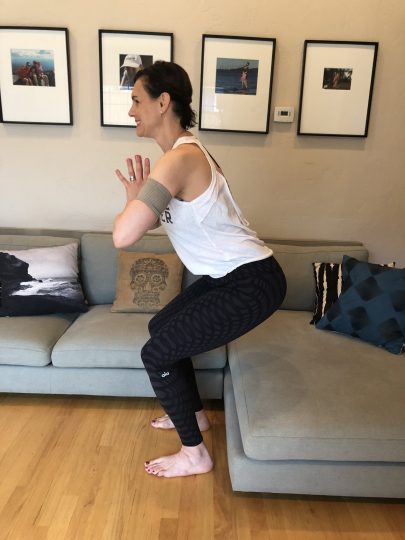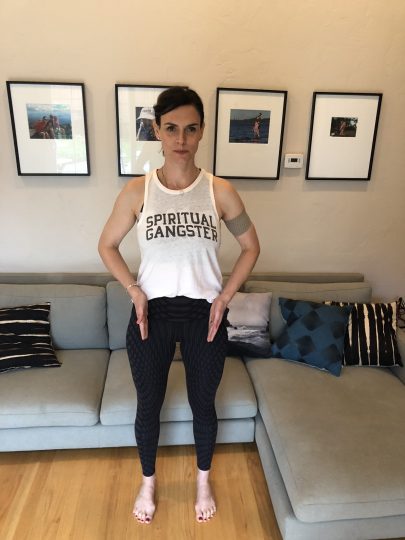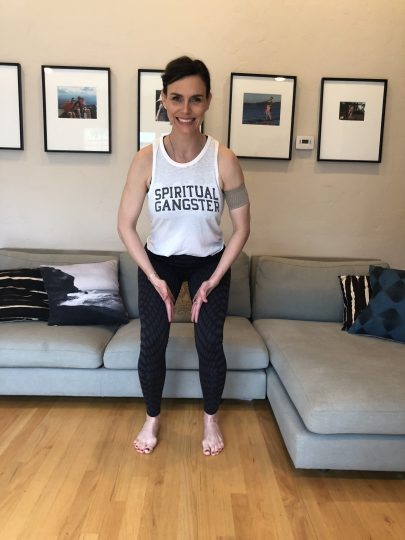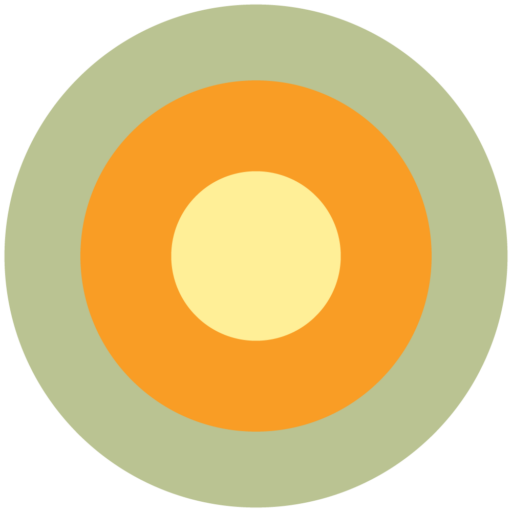Fit tip/Parallel Squat
Knowledge is power! At The Dailey Method we understand that the more knowledge we can give you, the more power you each have to continually evolve within and deepen your practice. Education is a primary key to changing the way we all move for the better.
Take Parallel Squat as an example:
This is an exercise that has been around for a long time and it is highlighted in many different types of fitness classes because of its effectiveness. It’s primarily thought of as a thigh exercise but at TDM we consider it one of our “thigh/seat” combos because there is tremendous strength to be gained in your gluteals and hamstrings on the upward part of the movement. These muscles live at the base of your spine and help you stabilize in all movement. They assist you in achieving better balance and do a huge job with respect to supporting a healthier spine as you move through life.
Like all of the exercises we teach, Parallel Squat is a functional exercise. While aligning and maintaining neutral spine during the movement you are training your body to bend and lift in its most supported state. This translates in so many practical ways and applies to your everyday activities in life. Picking up your kids when they need you, or sitting down and getting up off of a chair are only a few notable and integral ways to understand the importance of the health and strength of these muscles. Your mind and body will work together to create this movement safely and efficiently because you’ve already practiced the training in our classes, online videos or on your own.
Parallel squat is also an exercise that provides you with the tremendous benefits of strengthening your knee joint. This can help offset or rehabilitate knee problems, especially the more common ones that are medial or lateral to the joint.
It’s pertinent to know that there are subtle differences in the location of the acetabulum (the socket of your pelvis where your femur inserts) and the length of the femur (thigh bone). This results in making different squat variations more or less challenging in different bodies. Always prioritize alignment and active muscular engagement over depth and range of motion. Your neighbor may be lower but you’re both doing what’s ideal for your own body type.
Here’s how to do the perfect Parallel Squat.

- Feet are parallel and hip distance apart. This can be visualized by lining up the center of your foot with the bony protuberance in the front of your pelvis (ASIS).
- Feel your weight distribution evenly through all four corners of your feet, bend your knees as deeply as you can. Your knees will come forward of your ankle joint but must stay behind your toes.
- Lift your torso as upright as you can, maintaining neutral spine. It will be a parallel angle with your shins but the more you focus on lifting your torso upright the more capacity you have to
- While extending your legs focus on the energy of pressing upright from your gluteals and the energy of dragging your heels behind you to engage your hamstrings. On the lowering position envision the elongation of your quadriceps. This will keep them engaged throughout and help encourage a longer, stronger muscle.
- As you bend your knees, keeping them aligned over the centerline of the foot gives you the support of both the inner thighs and the outer thighs. Pay attention to hugging your inner shins towards one another while pressing your inner thighs away from each other at the same time throughout the bending and lengthening. This action is referred to as “shins in, thighs out’ and helps you maintain engagement of both inner and outer thighs so you’re hugging muscle to bone and optimizing stability and power – front to back, side to side.

- Stay present in your movement. Use your mind to focus on how your body feels and your teacher’s words to help you achieve optimal alignment in order to get deeper into your position.
In future fit tips I’ll visit a wider squat stance in a turned-out squat so that you can note the difference and determine what feels best in your body!
Happy aligned and engaged squatting!
Jill

